

Kanazawa
Citymonde Hotel, Kanazawa, Japan

Domestic travel information
On a way to Kanazawa:
If you fly Haneda (Tokyo) - Komatsu (Kanazawa) and use Narita
(Tokyo) AP, there is a bus between Haneda - Narita. It costs
JPY3,000 and takes 1.5-3hr. Please ask an estimated time for
arrival at ticket counter on the 1st floor (at the ground level)
of the Narita AP Terminal if you want use the bus. If there will
be ebough time, it is easier for foreiners to move between the
two airports.
Information on the last train to reach Kanazawa is uploaded at
http://kamata.s.kanazawa-u.ac.jp/iufro2003kanazawa/travel
info.pdf
If you cannot catch the last train, you should stay one night
around Osaka or Tokyo.
On a way back to your place:
If you start from Kanazawa by train in the morning, you can catch
flights later than 12:00pm when you leave from Kansai-AP and
those later than 3:30pm when you leave from Narita-AP. When you
use Narita-AP and move from Komatsu to Hneda by airplane, you can
catch flights later than 2:00pm. When you use a flight that
starts earlier than these, you must stay one night at the airport
or around Osaka or Tokyo.
People who will attend post-congress tour and will catch an
earlier flight should leave from the tour at Matsumoto Stn. or
Nagano Stn. and stay one night at the airport or around Osaka or
Tokyo.
The following is a helpful web site to decide your travel plan.
http://www.jorudan.co.jp/english/norikae/e-norikeyin.html
The Kansai Airport has a avery good English web site with some
train information at
http://www.kansai-airport.or.jp/english/access/jrwest.htm
TEL (076)224-5555 (From Japan)
TEL +81-76-224-5555 (From abroad)
Regarding transportation from Kanazawa
Station to the Kanazawa Citymonde Hotel, I strongly suggest you
to use taxi. It will cost around JPY1200.
It was extraordinary mild summer in Japan.
Daily maximum temperature is 18-30 °C, and daily minimum temperature is 15-20 °C.
Kanazawa is famous for its wet climate. Please bring rain-gears.
During in-congress tour, we will vist a forest damaged by Japanese oak wilt, which was caused by an ambrosia fungus carried by an ambrosia beetle. If you want see it with your own eyes, please bring an athletic footgear.
Climate and clothing (Post-Congress tour)
We will go up high mountain (2,800 m ASL). It is very cool.
Don't forget sweater, rain-gears, and athletic footgear. I reccomend you to bring sunglasses.
Draft program for the meeting: Word document (80 K) or PDF (127 K)
Please review the program and e-mail Naoto Kamata if there are errors that need to be corrected.
The draft program only includes oral and poster papers submitted by people who have finished payment by 3 SEP 2003. There is room on the program for eight additional poster papers.
Poster papers should be put up Monday afternoon from 12:00 - 17:00. They will need to be removed by the end of the session on Friday (17:45).
The time allotted for oral papers is 25 minutes total including questions/discussion. It is preferred to sum up your talk shorter than 20 minutes.
People giving oral papers who are using PowerPoint presentations should bring their presentation on a CD (or, on a 3.5 inch diskette) to the registration desk Sunday evening or early Monday morning so that the all the PowerPoint presentations can be loaded and checked in advance. We recommend having back-up overheads for your PowerPoint presentation in case there are problems with the computer projection system.
We will also have an overhead projector available for the oral presentations.
IF YOU WANT TO USE A SLIDE PROJECTOR, PLEASE NAOTO KAMATA KAMATA IN ADVANCE.
The organizing committee has
prepared a special rate for students (JPY 5,000.). If you are a
student, you CAN choose this special student rate. BUT please remember that
this has several limitations as follows:
1. Scientific conference only.
2. A space for an oral presentation will NOT be allowed for the special rate.
3. A space for poster presentations will be prepared with no
limitation in the numbers.
4. You will receive one volume of the proceedings.
5. It does NOT include buffet lunches, in-congress field
trip on 18 September, the welcome party, the farewell party, or
post-congress field trip (20-21 SEP). They are optional.
Costs of these options are as
follows:
Welcome party (14 SEP) (JPY 5,000.)
In congress field trip (18 SEP) (JPY 5,000.)
Buffet lunches (4 times) (JPY 8,000.)
Farewell Party (19 SEP) (JPY7,000.)
If you want to perticipate in the conference by this special student rate, please contact Naoto KAMATA before payment procedure.
Because of time, the total number of oral presentations will be limited to 55 (25 min /pers including discussion). FCFS!
We would really appreciate it if the participants understand our policy as follows:
The organizing committee strongly suggests you use the LCD projector with Microsoft Powerpoint. Plesse bring your presentation on CD. IBM compatible PCs with Microsoft Windows will be available during the conference. There may be some troubles when you prepare your powerpoint file with a MacIntosh computer. If you want to use computer program other than PowerPoint or to use a Mac Computer, please contact Naoto KAMATA by 10 Septermber 2003.
If you are using electronic media, please bring your presentation on CD with you to registration on Sunday (14 SEP) afternoon (17-19:00).
You can also use an OHP for transparency.
If you want to use a 35 mm slide projector, please email to Naoto KAMATA.
Because of time, the total number of oral presentations will be limited to 55 (25 min /pers including discussion).
Poster Size Poster boards are 0.9 meters x 2.2 meters mounted landscape (long axis vertical). The recommended size of poster is smaller than 0.9 meters x 1.8 meters.
Posters will be displayed from the morning of 15 SEP ultil 17:45 on 19 SEP.
An organizing committee announces a competition for participation in a POSTER SESSION to be held at the workshop. The best poster award, the most beautiful poster award, etc. Fancy traditional crafts will be provided for the winners. The organizing committe encourages participants to present their posters as well as oral papers.
A proceedings will be published as a special supplement issue of Proceedings of International Symposium of the Kanazawa University 21st-Century COE Program (ISSN 1348-3048) sponsored by Kanazawa University.
The organizing committee is also planing to publish several selected papaers as a special features in the journal "Population Ecology". It is now under negotiaion with an Editorial Board of the journal.
An abstract does NOT need to be sent in.
Presentations may focus on any forest insect and are NOT restricted to defoliators or bark beetles.
Travel to Kanazawa
Simillar information are also
available on website of a travel agent.
KANAZAWA, the biggest city in the Hokuriku region has a
population of 450,000, and is a castle town that was ruled over
by the Maeda family for three centuries after the first lord
Toshiie Maeda entered Kanazawa Castle in 1583.
The development of its special products like rice, sake, sweets,
etc. was due to its temperate and rainy climate with heavy snow
in winter.
The city is surrounded by the Japan Alps, Hakusan National Park
and Noto Peninsula National Park. Two rivers run through the
city; the Saigawa River is said to be a lively masculine river
and the Asanogawa River to be a sweet, feminine river. Such a
natural background of great beauty gives the city a relaxed
feeling.
Since the Kaga Clan invited many artists and craftsmen to this
area, it achieved a high level of craftsmanship that continues to
flourish to this day.
Colorful KUTANI POTTERY, earthy OHI POTTERY, elegant KANAZAWA
LACQUERWARE, glittering KANAZAWA GOLD LEAF, unique-to-Kanazawa
PAULOWNIA CRAFT, specially hand-painted KAGA-YUZEN SILK, KAGA
ZOGAN, KAGA EMBROIDERY, KAGA FISHING FLIES, MIZUHIKI, and
KANAZAWA BUDDHIST ALTARS (Crafts and Arts in Knaazawa).
The buildings that gave birth to these traditions stand
tranquilly and blend in with the modern atmosphere in Kanazawa to
create a charming ancient castle town.

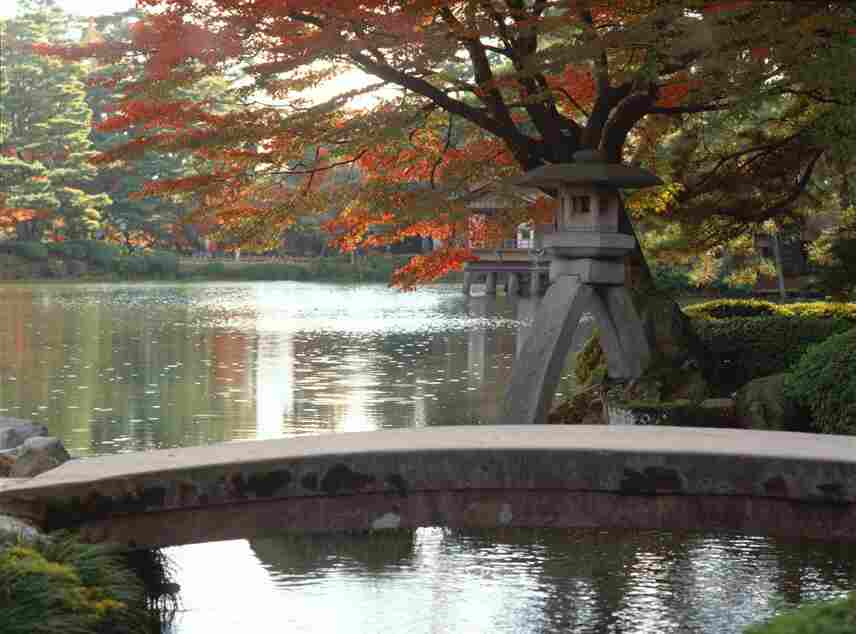
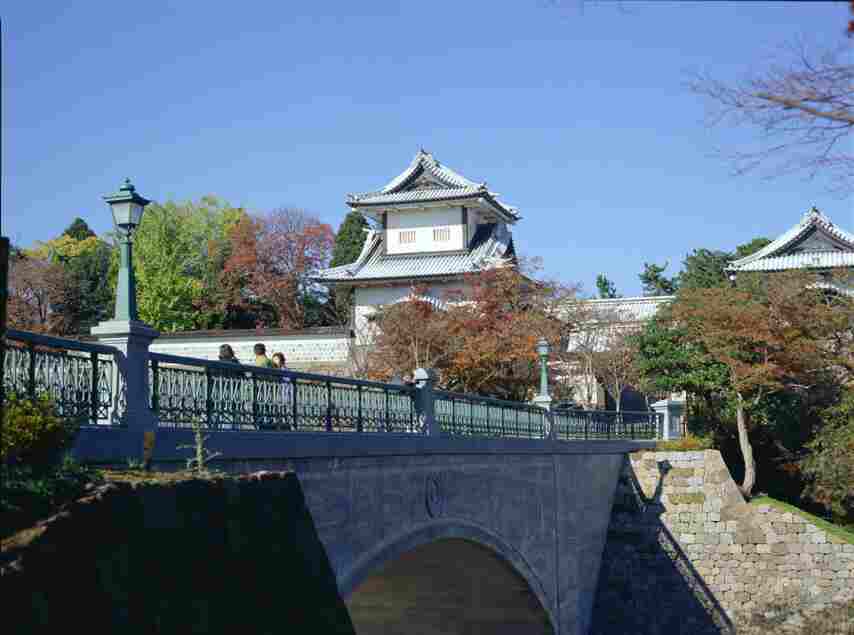
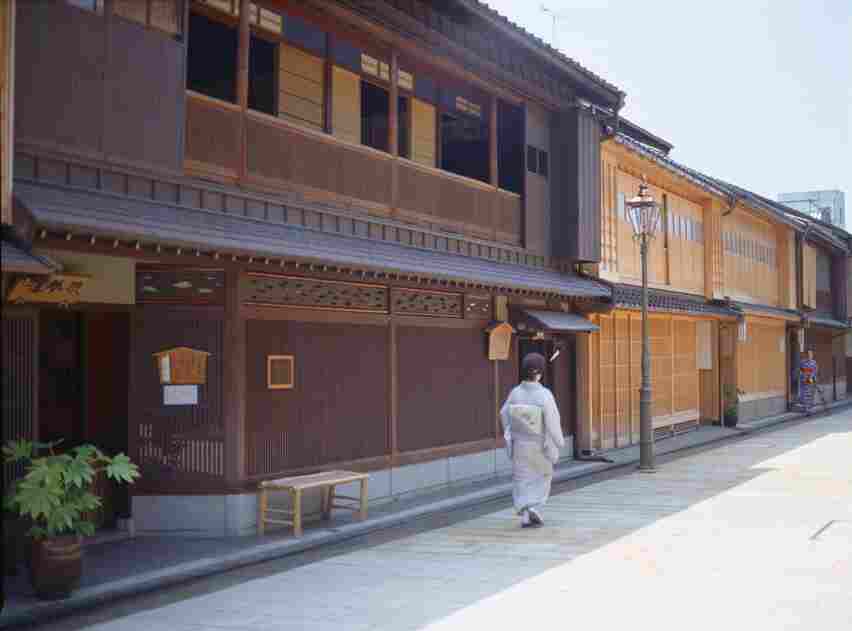
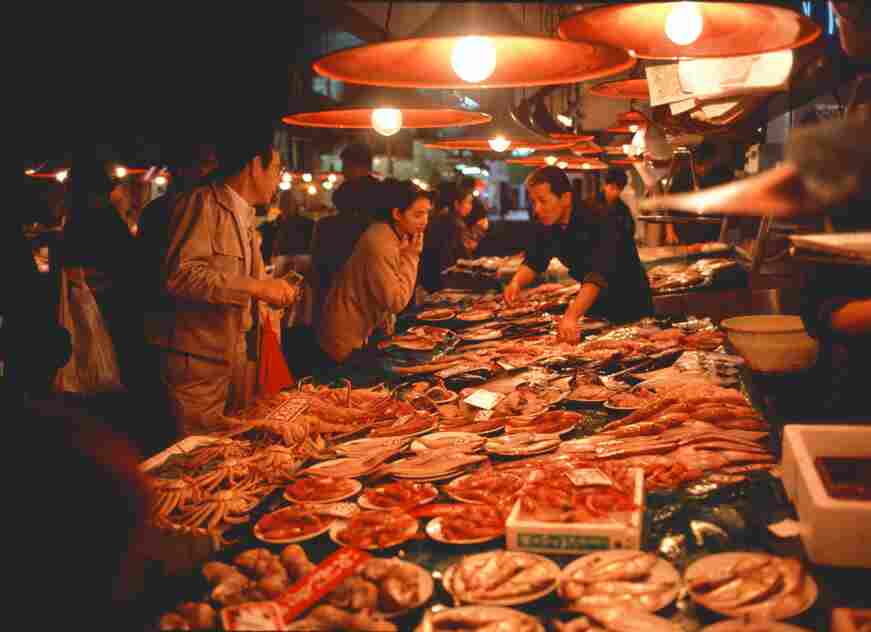
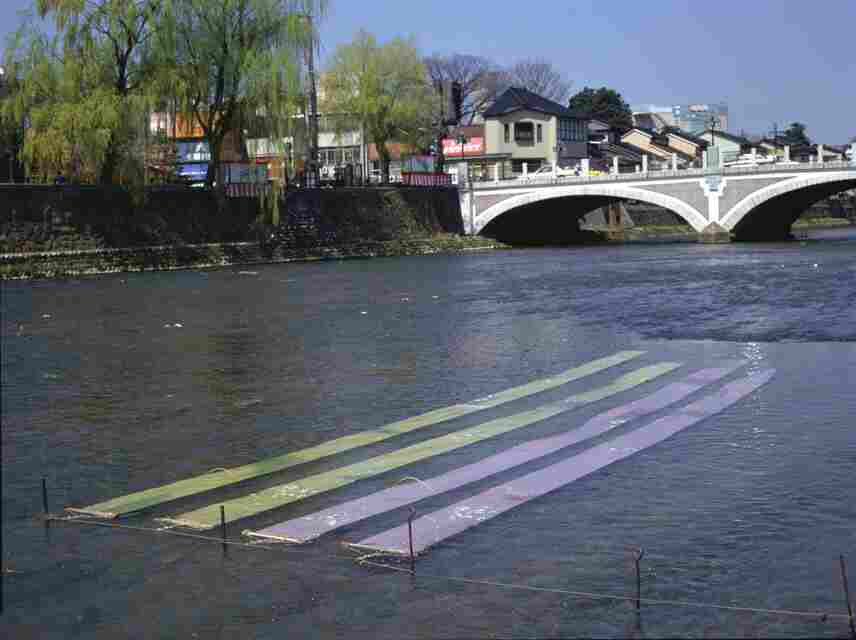
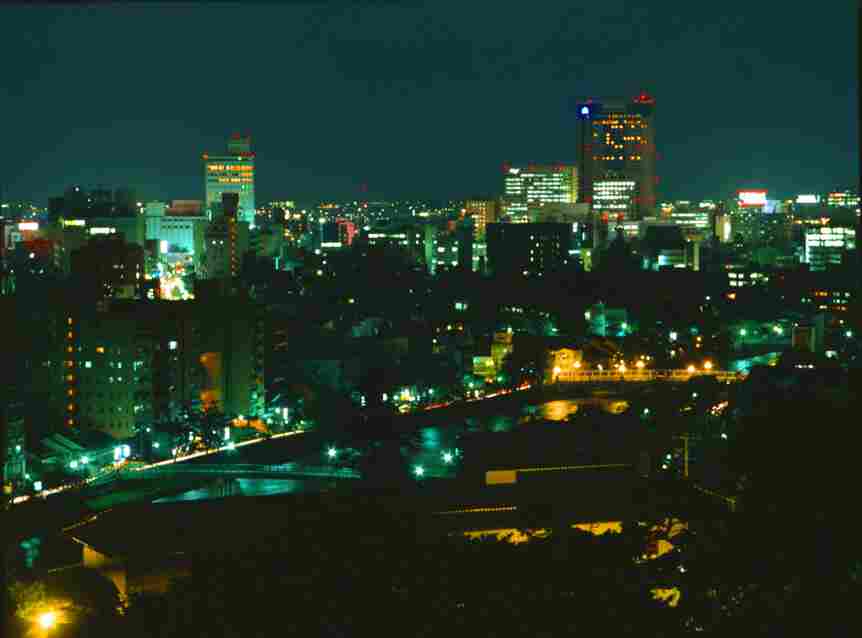
| September 14 (SUN) afternoon | Registration |
| September 14 (SUN) evening | Welcome party |
| September 15 (MON) | All day plenary session (start at 8.00) |
| September 16 (TUE) mornig | plenary session (start at 8.00) |
| September 16 (TUE) afternoon | sightseeing and shopping in downtown Kanazawa |
| September 17 (WED) | All day plenary session (start at 8.00) |
| September 18 (THU) | All-day field trip (Echizen Coast National Park) |
| September 19 (FRI) morning & afternoon | All day plenary session (start at 8.00) |
| September 19 (FRI) evening | Farewell party |
| September 20 (SAT) morning | Check out |
| September 20 (SAT)-21 (SUN) | Optional overnight field trip to Gokayama, Mt. Norikura, and Kamikochi |
In-Congress Field Trip (September 18, 2003)
One day trip to Echizen Coast National Park. This site has extensive stands of Coastal Pine forest badly damaged by pinewood nematode and oak mortality caused by ambrosia beetle fungus; accompanying guests are welcome to participate.
Post-Congress Field Trip (Optional, 20-21 September, 2003)
Post-conference field trip (Optional) to Gokayama, Mt. Norikura and Kamikouchi. Gokayama is an Historic Village registered on the World Heritage list by UNESCO. Located in a mountainous region that was isolated from the rest of the world for many years, the gassho-style villages maintained traditions of growing mulberry trees and rearing silkworms. Their large houses with double, steeply pitched, thatched roofs are unique in Japan. Despite economic upheavals, the villages of Ogimachi, Ainokura and Suganuma are still exceptional examples of how the traditional way of life maintained a balance both in their environment and social system. We will visit Ainokura Village and the volcanic crater of Mt. Norikura (3,026 m ) on the first day. The spectacular fall colors can be enjoyed during our one-hour hike in Mt. Norikura. On the second day, we will visit Kamikouchi, a basin at an elevation of 1,500 m surrounded by high mountains. We also will enjoy hiking with spectacular views of Taishou-ike pond located in natural mixed forests of birch and subalpine conifers. In October, the beautiful fall colors of the riparian forest along Azusagawa River is also enjoyable. We will stay one night at a Japanese Onsen (hot spa) hotel; Accompanying guests are welcome to participate.

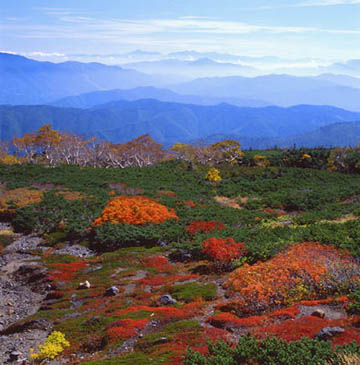
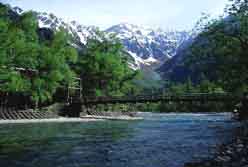
Gokayama (Left), Mt. Norikura (Middle), and Kamikouchi (Right)
IUFRO Working Group 7.01.02 "Tree Resistance to Insects"Francois Lieutier |
Michael Wagner |
|
|
IUFRO Working Group 7.03.06 "Integrated management of forest defoliating insects" |
||
| Michael McManus | Naoto Kamata | Julius Novotny |
IUFRO Working Group 7.03.07 "Population Dynamics of Forest Insects" |
||
| Andrew Liebhold | Hugh Evans | Katsumi Togashi |
ver 2.11
Last Update 2003/08/12